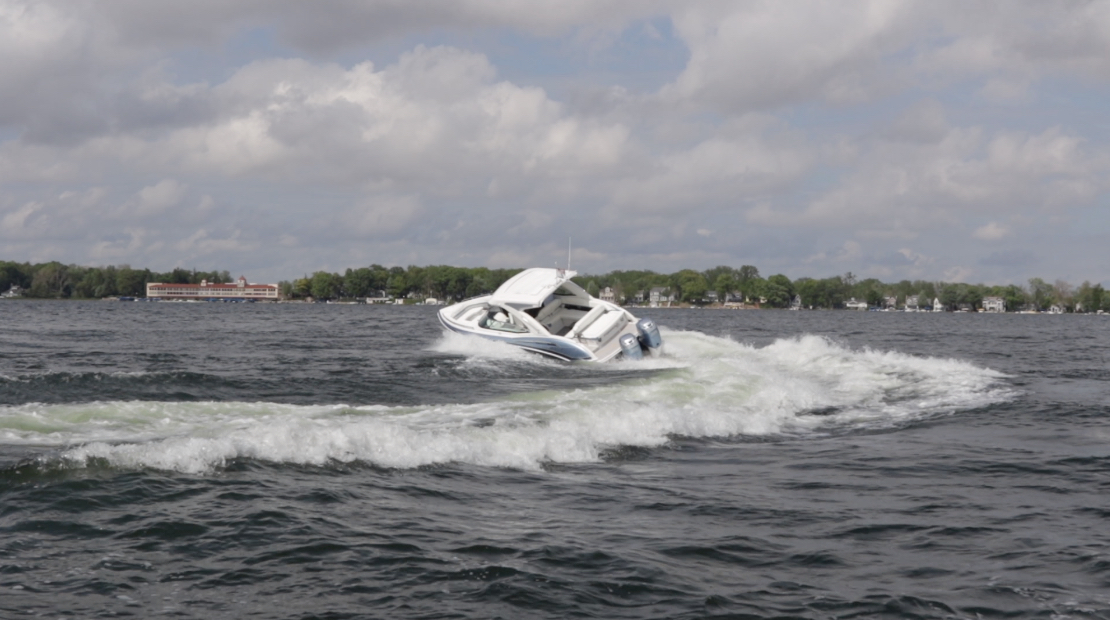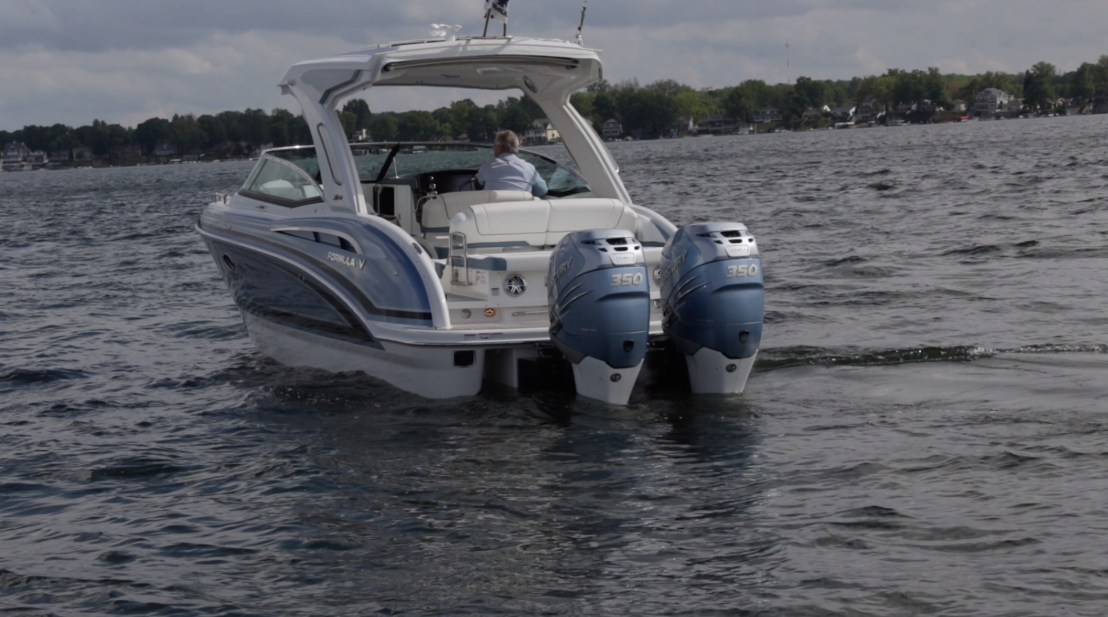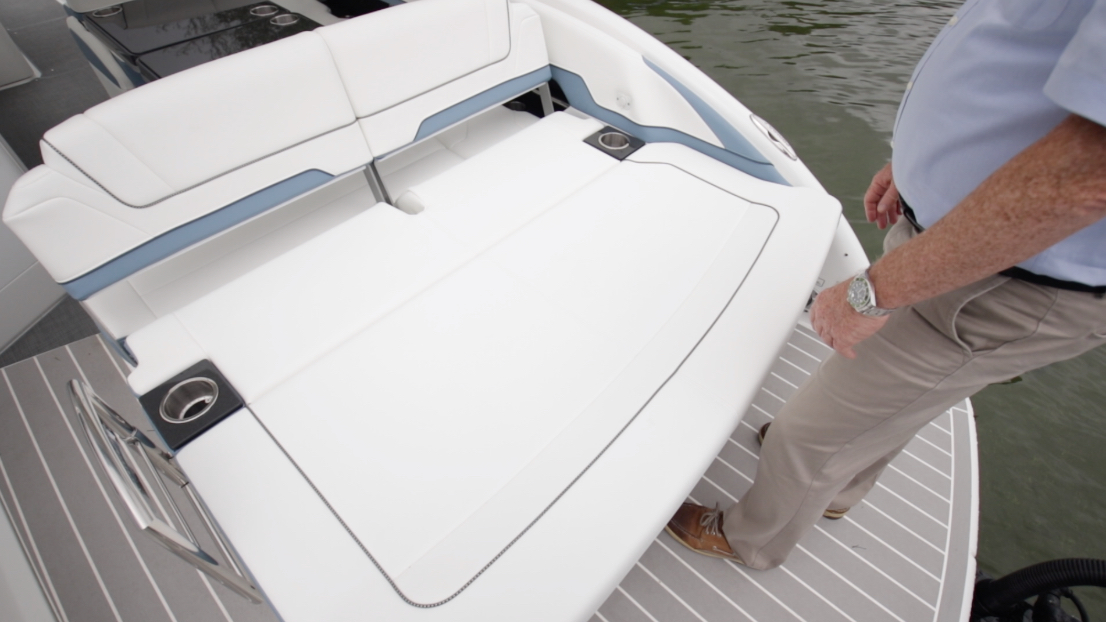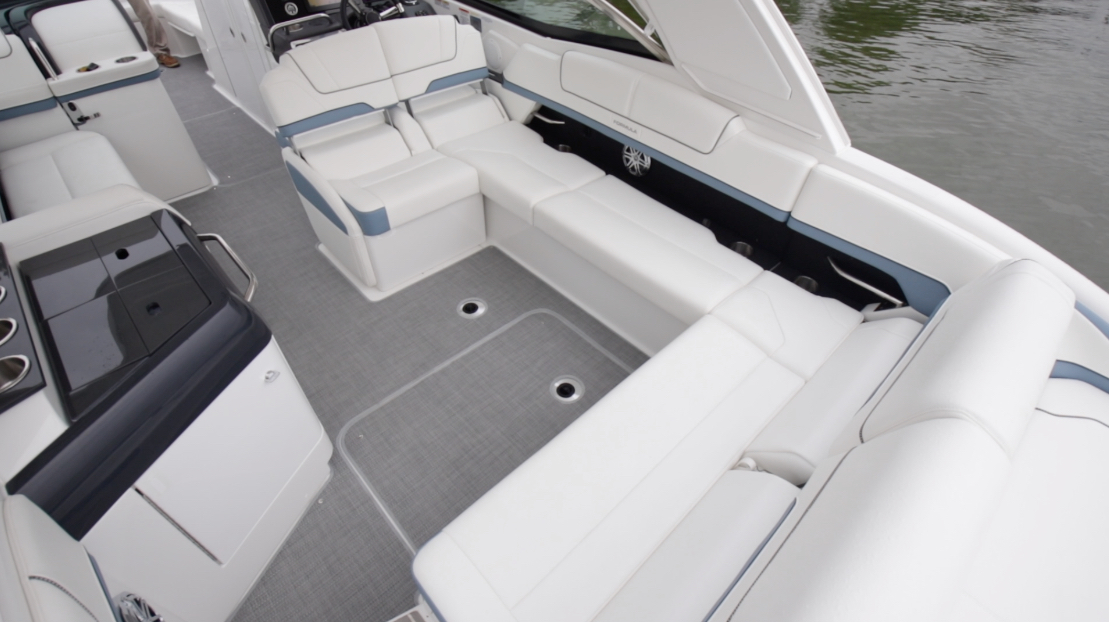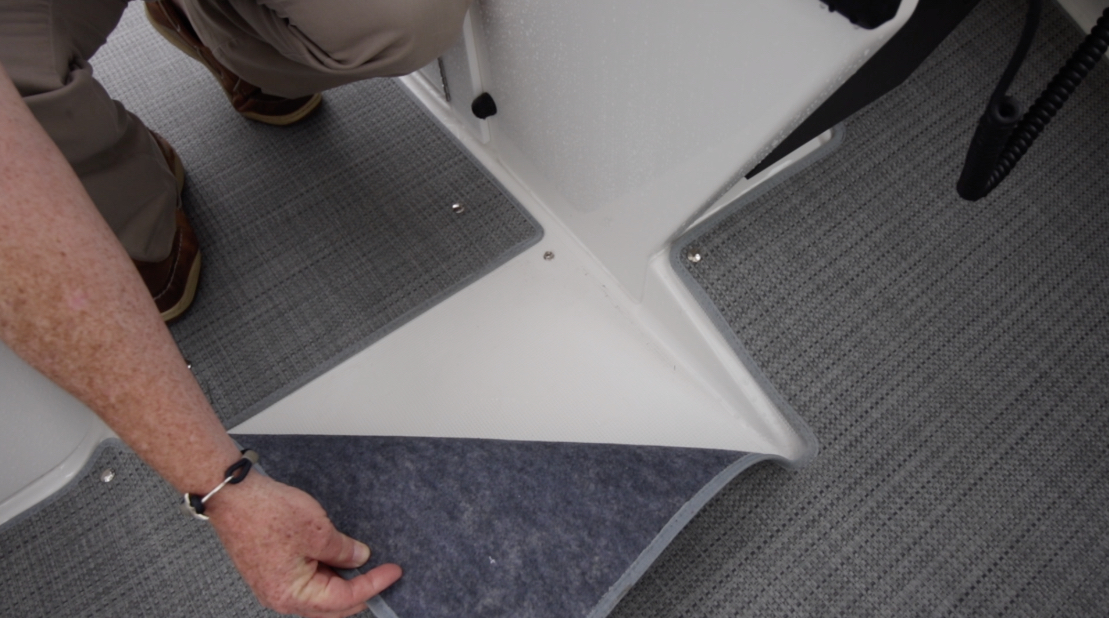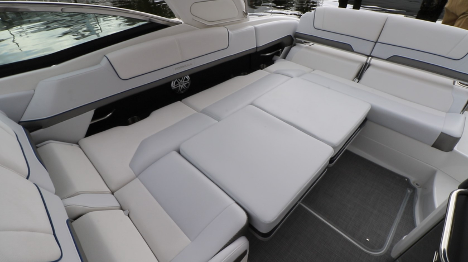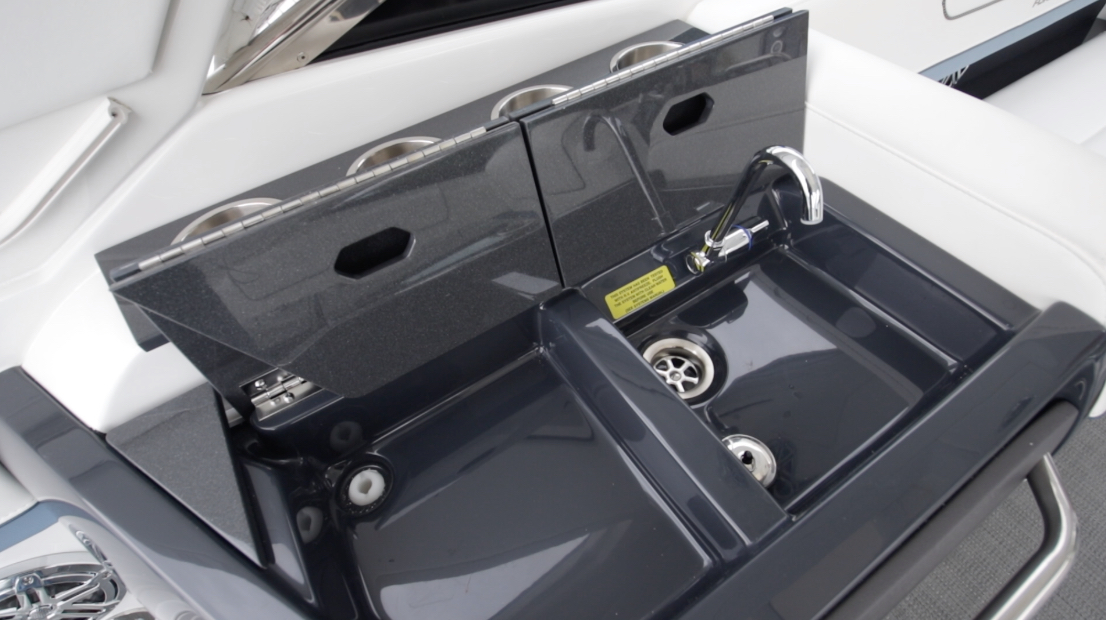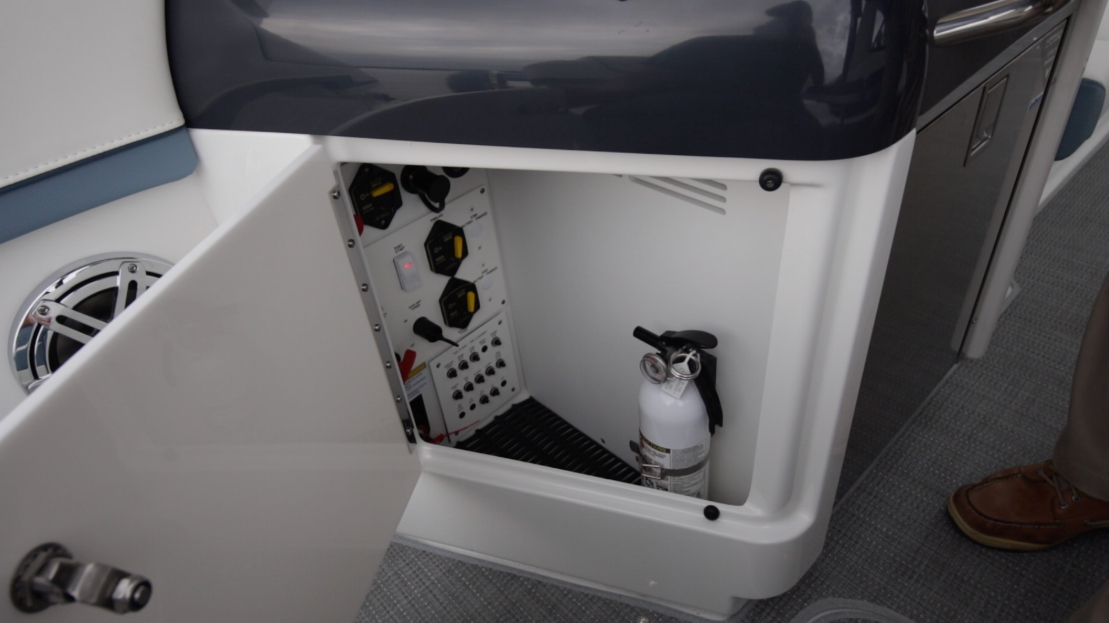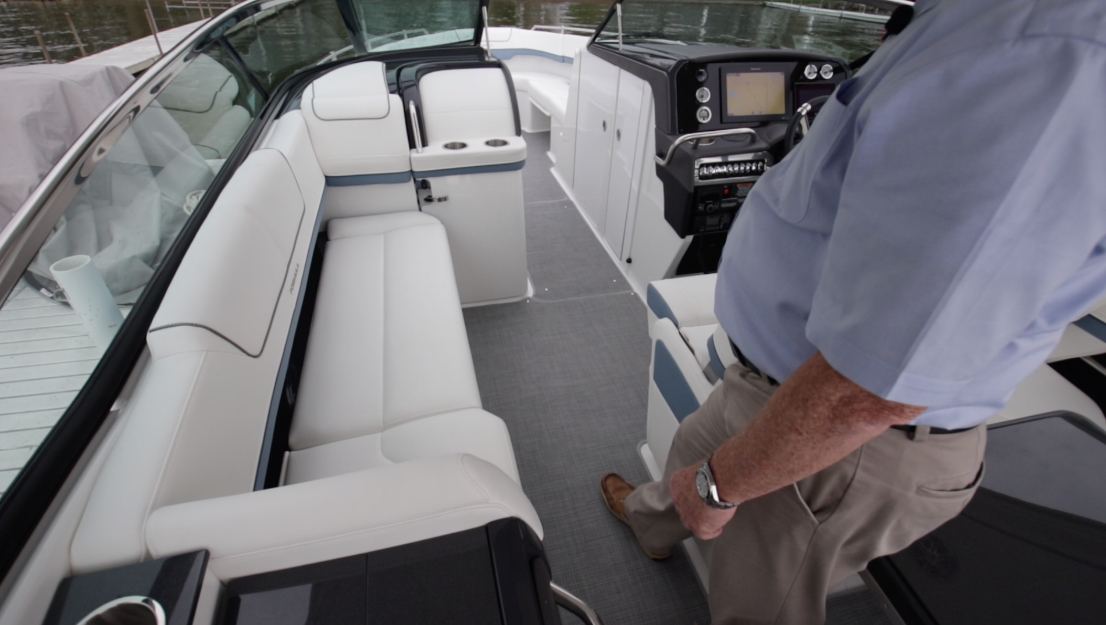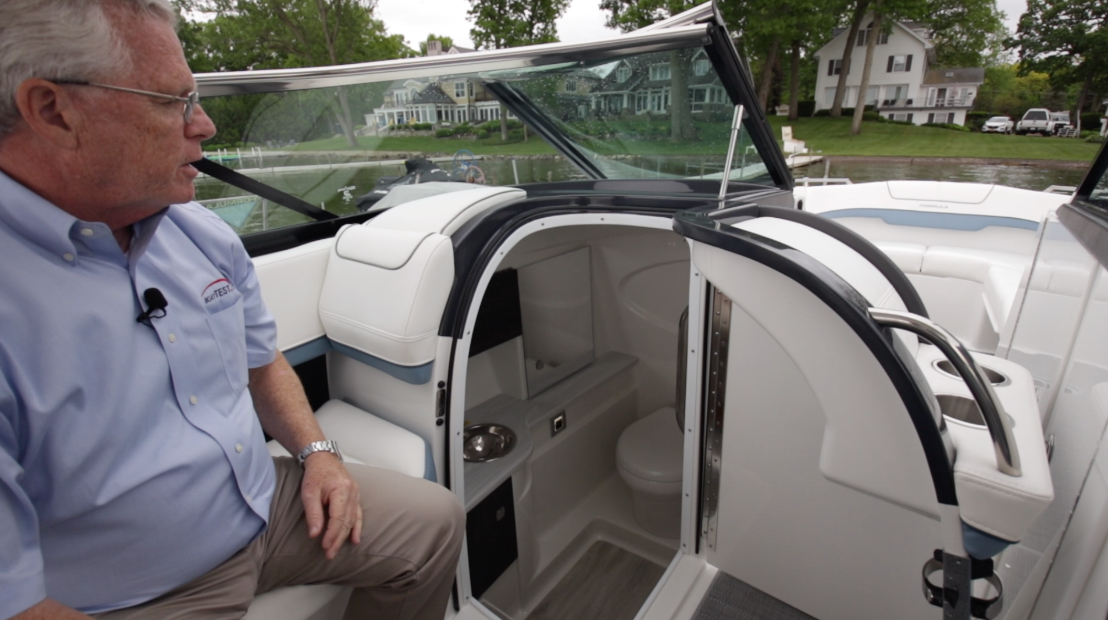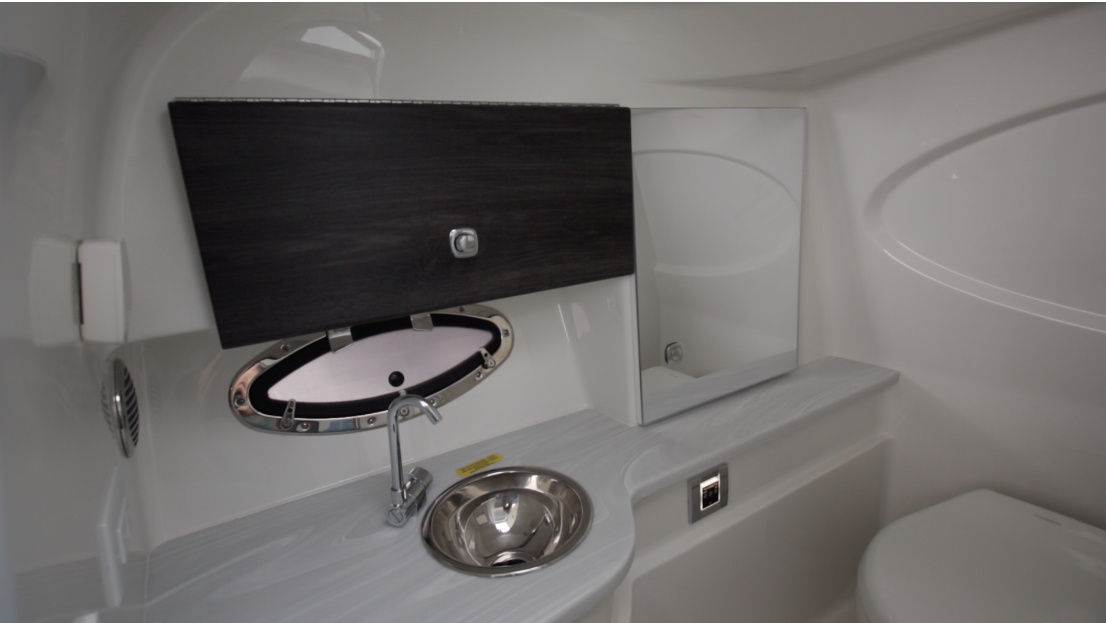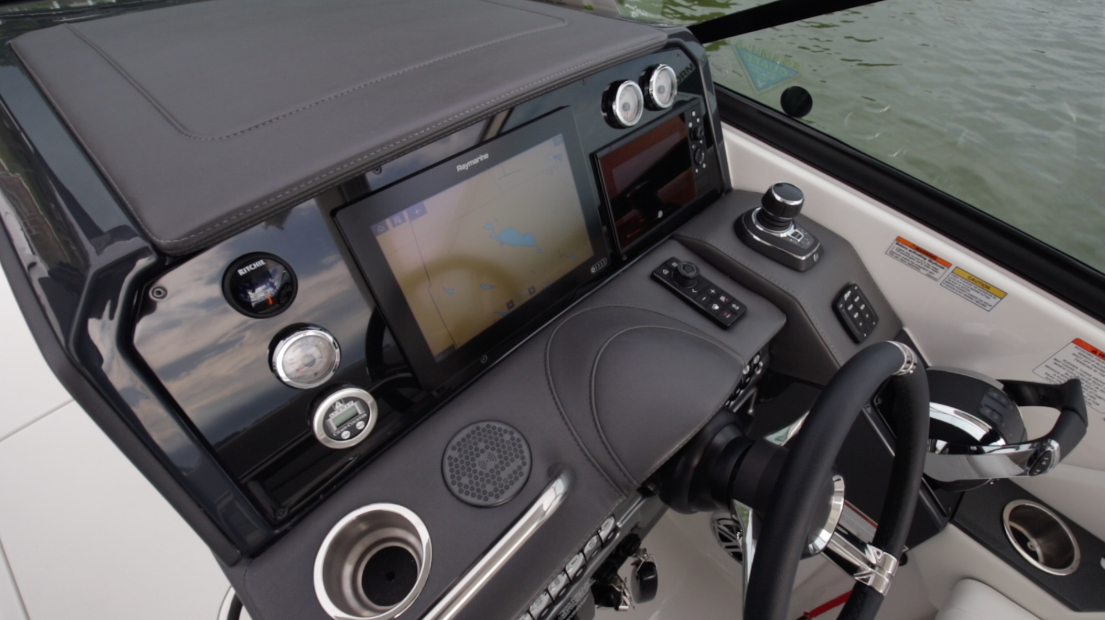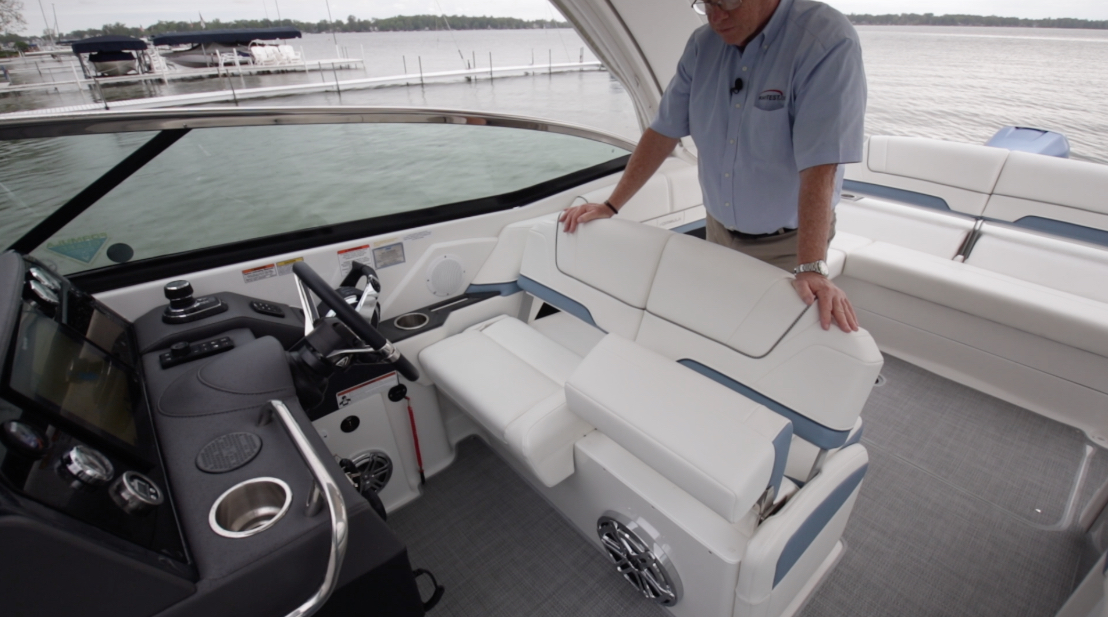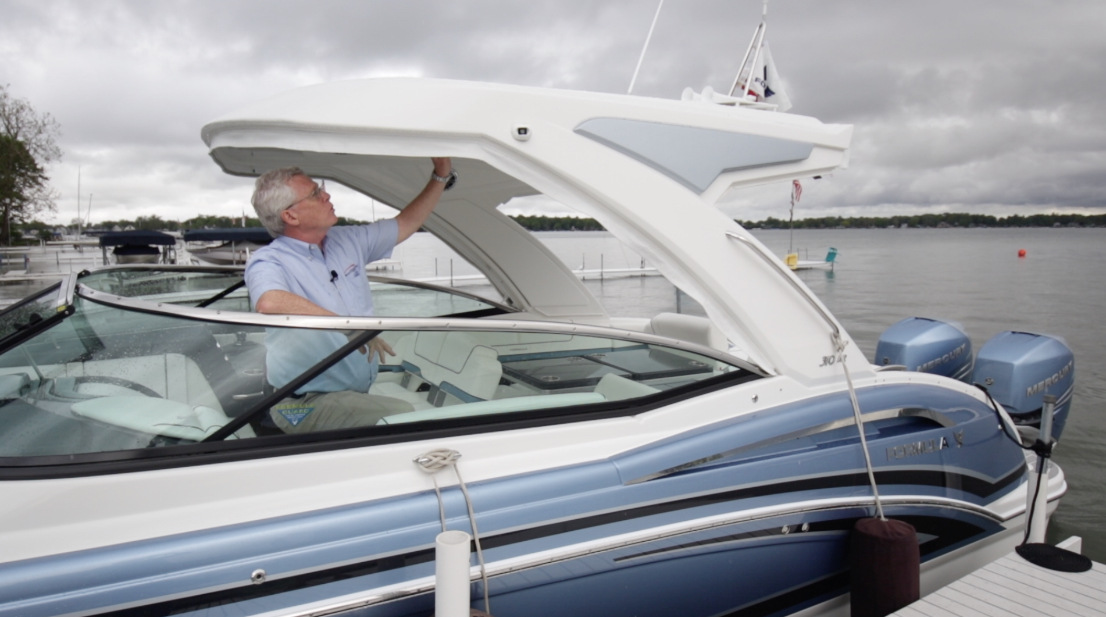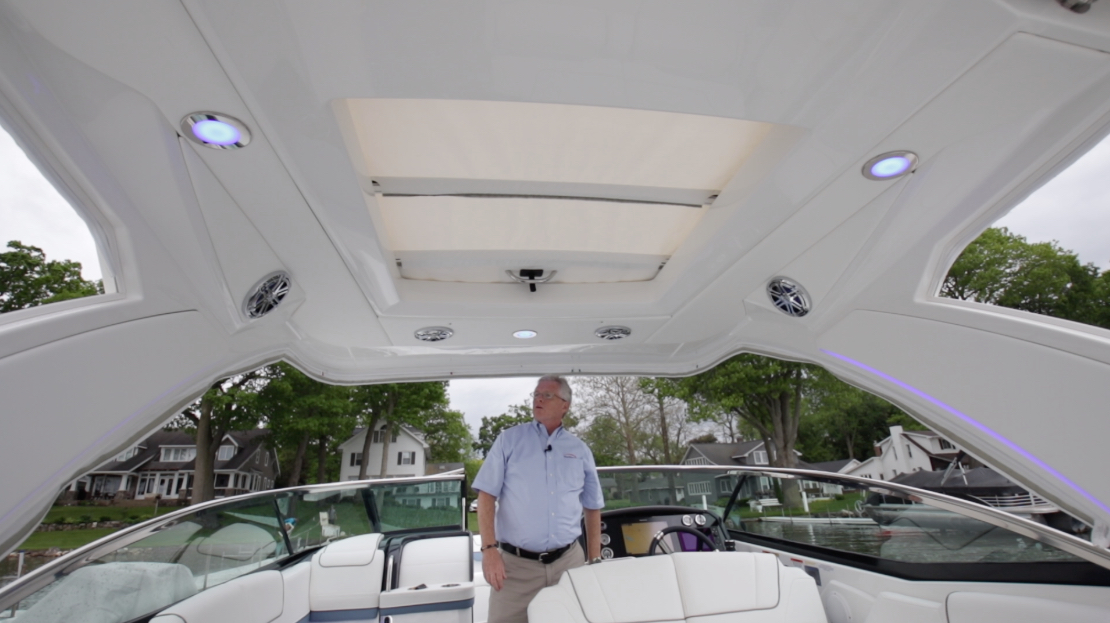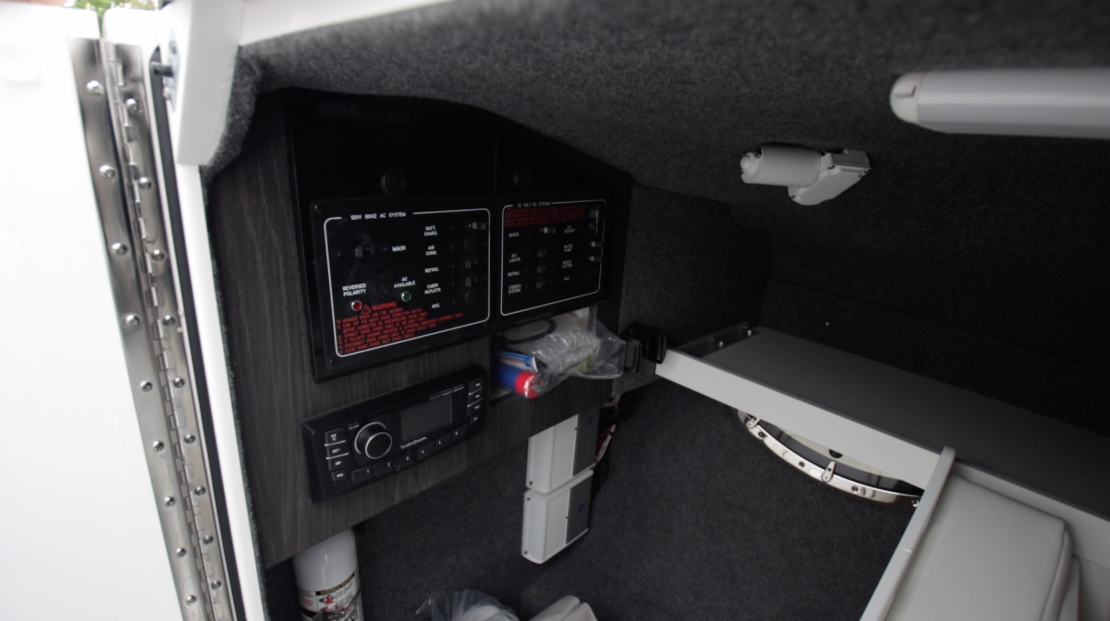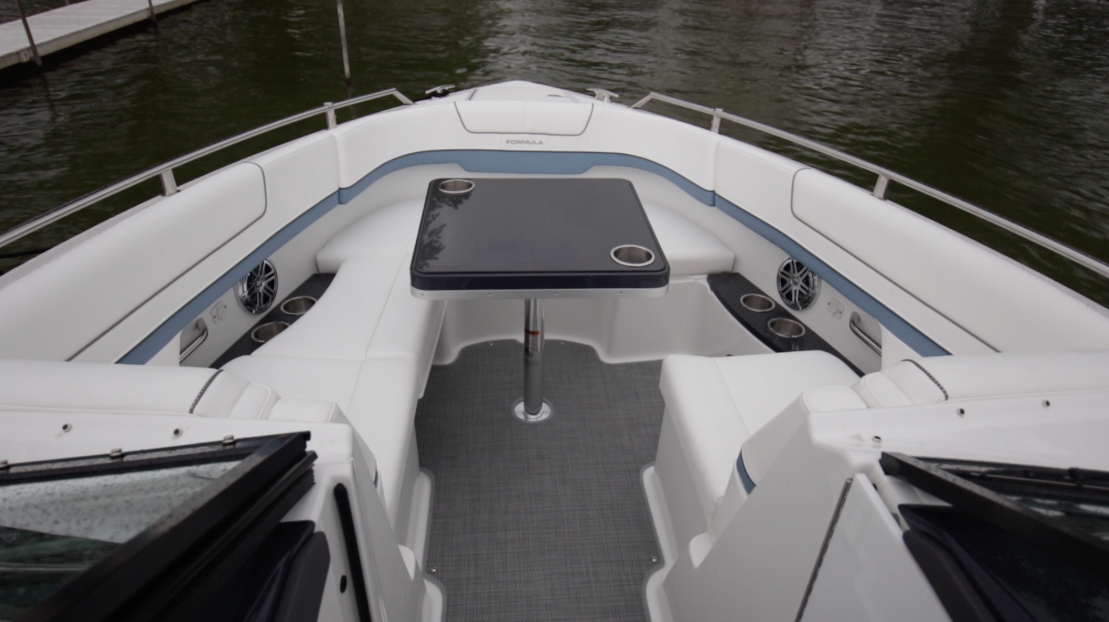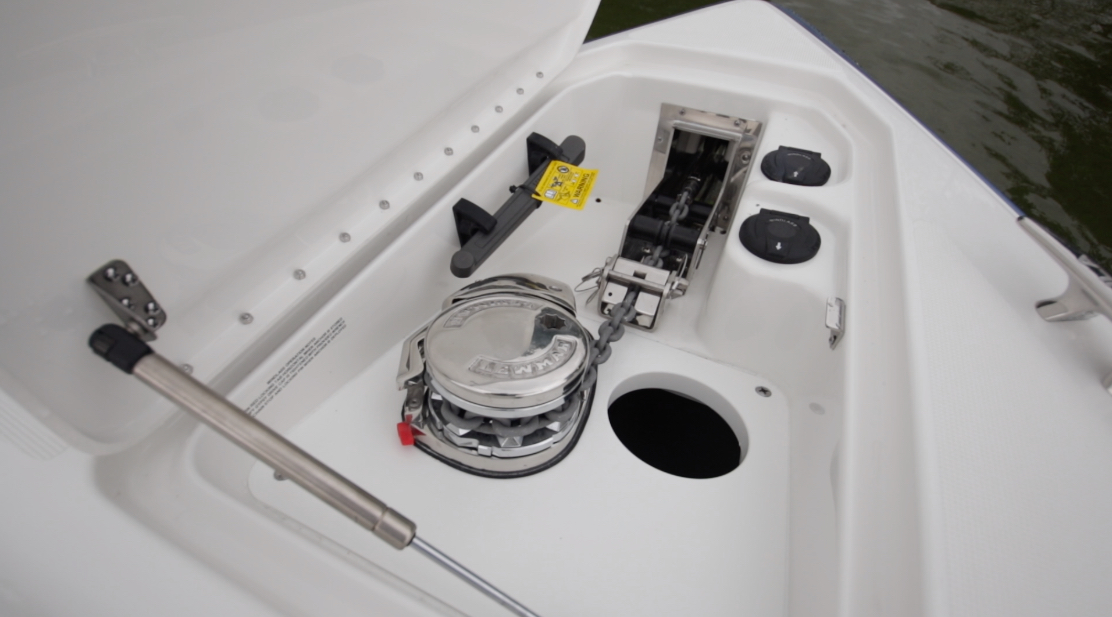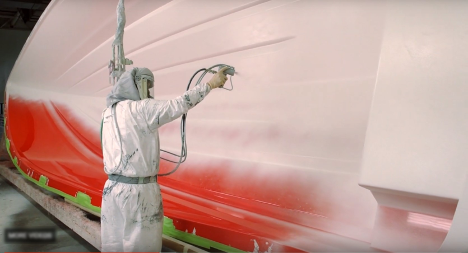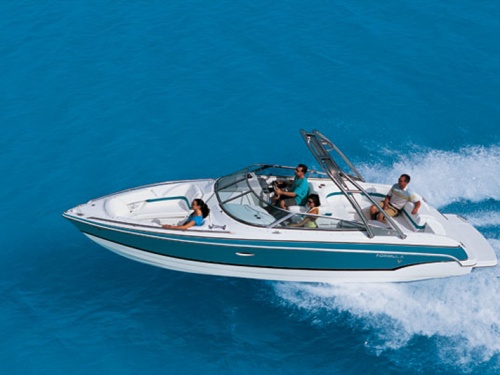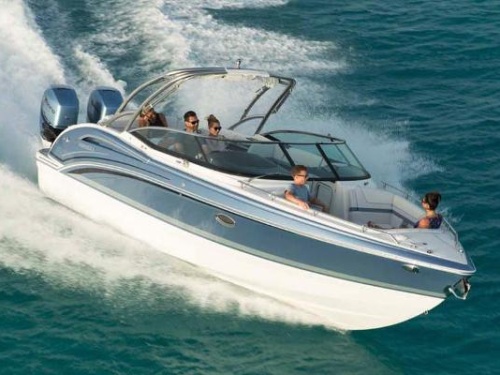Access More Boat Tests
Already have an account? Login
Formula 310 Bowrider Outboard (2021-)
2 x 350-hp Merc Verado JPO L6
Brief Summary
Formula designed the 310 Bowrider to provide enough amenities to encourage friends and family to spend all day on the water enjoying their favorite activities - swimming, diving, tow sports or simply socializing.
Test Results
| RPM | MPH | Knots | GPH | MPG | NMPG | STAT. MILE | NM | dBa |
|---|---|---|---|---|---|---|---|---|
| 630 | 4 | 3.5 | 1.5 | 2.7 | 2.3 | 312 | 271.3 | 54.2 |
| 1000 | 6 | 5.2 | 2.7 | 2.3 | 2 | 265 | 230.4 | 63.1 |
| 1500 | 7.5 | 6.5 | 4 | 1.9 | 1.6 | 218 | 189.5 | 67.6 |
| 2000 | 8.8 | 7.6 | 6.8 | 1.3 | 1.1 | 152 | 131.9 | 73.4 |
| 2500 | 11.1 | 9.7 | 11.5 | 1 | 0.8 | 113 | 98.6 | 75.7 |
| 3000 | 14.9 | 12.9 | 16.2 | 0.9 | 0.8 | 107 | 93.3 | 80.4 |
| 3500 | 19.2 | 16.7 | 20.5 | 0.9 | 0.8 | 110 | 95.5 | 82.1 |
| 4000 | 22.2 | 19.3 | 23.2 | 1 | 0.8 | 112 | 97.1 | 83.3 |
| 4500 | 28.7 | 25 | 26.1 | 1.1 | 0.9 | 125 | 108.7 | 85.1 |
| 5000 | 39.6 | 34.4 | 33.1 | 1.2 | 1 | 140 | 121.7 | 86.3 |
| 5500 | 43.7 | 38 | 41.9 | 1 | 0.9 | 122 | 106.1 | 86.2 |
| 6000 | 49 | 42.6 | 61.8 | 0.8 | 0.7 | 93 | 80.6 | 86.1 |
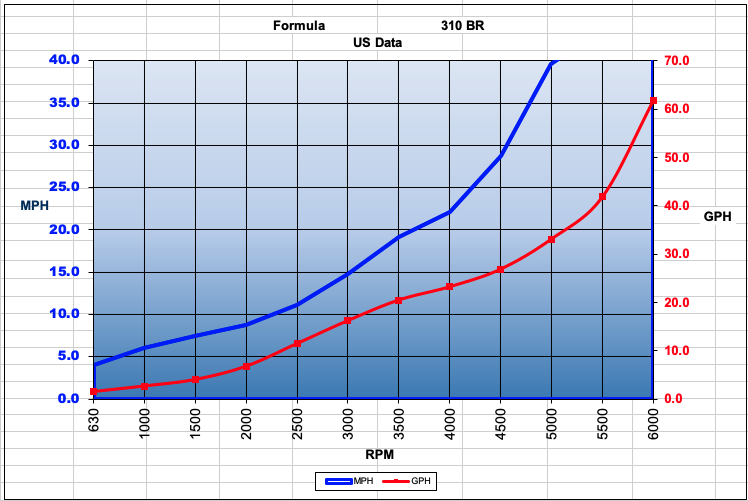
Specifications
| Length Overall |
31' ( 9.45 m) 34'10" (10.6 m) w/ extended swim platform |
|---|---|
| Beam |
9'6" 2.9 m |
| Dry Weight |
10,750 lbs. 4,876 kg |
| Tested Weight |
11,901 lbs. 5,398 kg |
| Draft |
37" .94 m |
| Deadrise/Transom | 22° |
| Bridge Clearance |
6' (1.83 m) 8'8" (2.64 m) w/ arch |
| Fuel Capacity |
130 gal. 494 L |
| Water Capacity |
29 gal. 110 L |
| Total Weight |
11,901 lbs. 5,398 kg |
Acceleration Times & Conditions
| Time to Plane | 4.7 sec. |
|---|---|
| 0 to 30 | 10.2 sec. |
| Props | 18p rev 4 |
| Load | 3 persons, 70% fuel, no water, 50 lbs. of gear |
| Climate | 68 deg., 89 humid., wind: 5-10 mph, seas: <1 |
Engine Options
| Tested Engine |
2 x 350-hp Merc Verado JPO L6 |
|---|
Captain's Report
Formula 310 Bowrider: Now with Outboard Power and Available Hardtop
By Capt. Steve Larivee
Mission
“We don’t build for the masses, but we do build for you” is Formula’s creed. These boats have extensive options from the choice of engine manufacturers to the color and texture of the upholstery.
Formula designed the 310 Bowrider to provide enough amenities to encourage friends and family to spend all day on the water enjoying their favorite activities - swimming, diving, tow sports or simply socializing.
Distinguishing Features
- Race boat heritage
- Customizable
- 5-year Sea Tow Membership
Major Features
- Outboard Power
- Available custom-designed hardtop
- Helm Command
- Wet Bar
- Stainless-steel hardware throughout
- Improved Storage
- Transom Lounge
Overview
Formula was founded in 1962 by Don Aronow. As most boating enthusiasts know, Formula has its own racing pedigree dating back to the Deep-V 233 hull and success in the national offshore racing circuit. The current 310 Bowrider has a 22-degree deadrise on an evolution of the deep-V, Formula’s FAS³TECH hull.
The Numbers
The Formula 310 Bowrider has a LOA of 34’ 10” (10.62 m), a beam of 9’6” (2.9 m), and a draft of 37” (93.98 cm). With an empty weight of 10,750 lbs. (4,876 kg), including the twin 350s, 70 percent (91-gal/344.5 L) fuel and three people onboard, we had an estimated test weight of 11,901 lbs. (5,398 kg).
With the twin 350-hp Mercury Verados turning 18P Rev4 props and wound up to 6000 RPM, our speed topped out at 49 MPH. Best cruise came in at 5000 RPM and 39.6 MPH. At that speed, the 33.1 GPH fuel burn translated into 1.2 mpg and a range of 140 statute miles, all while still holding back a 10-percent reserve of the boat’s 130-gallon (492 L) total fuel capacity. We had a 4.7-second average time to plane and she’ll stay on plane right on down to 17.5 MPH. We passed through 20 MPH in 6.4 seconds and through 30 in 10.2 seconds.
Handling
With relatively calm seas, we were left with crossing wakes to show how she shoulders waves aside and keeps spray well away from the windshield and cockpit. We found no adverse effects, such as hull slap or pounding, and the ride remained dry throughout.
Formulas are well known for being sea-kindly, so we didn’t expect any surprises. The 310 Bowrider quickly settled into her 5-degree bow-high attitude and we felt no need to mess with the outboard trim, letting the auto trim system handle that task on its own. Trim tabs were another story though. Left on its own, the 310 will porpoise above 25-30 MPH. A couple of LED indicator lights registering down trim keeps the bow in control and the ride improved dramatically. Turns are solid with no ventilation of the propellers and zero chine walk.
Features Inspection
The Engines
The 310 Bowrider is available with a number of power options: Mercury Bravo III sterndrives, Volvo Penta Duoprops and now even Mercury Verado Outboards from 350-hp on up to the 400 Racing, all with Joystick Piloting. BoatTEST has tested this boat with a number of engine configurations. Look for our tests in our archives to compare performance with these 350-hp Merc Verados.
It goes without saying that Formulas are well known for being customizable. The choices of trim and colors are seemingly endless. The “Formula My Way” program allows for many different hull colors, and the engine cowls can even be painted to match. Our test boat has such customization, and the combination is stunning.
The Swim Platform
Outboard powered boats have risen dramatically in popularity in the past decade. In this application, the engines are mounted to an Armstrong bracket, which leaves a cleaner and unfettered stern for entertainment areas and a larger swim platform.
Integrated into the front of the swim platform is a 44” (111.76 cm) x 64” (162.56 cm) aft-facing sun lounge. Reversible individual two-position seatbacks provide chaise-style backrests. Beverage holders and charge ports are to the sides. Underneath is cavernous storage that even includes a 12-V charge port for plugging in a water toy inflator.
The Cockpit
We enter the cockpit through a 15” (38.10 cm) wide walkway to port. The cockpit is a continuous molded deck and liner with non-skid decking being the standard. Choose from either snap-in matting or wood-grained vinyl decking. Seating starts with a J-shaped settee to starboard. We can increase the capacity by flipping the helm and aft seatbacks accordingly. Like all seats on this boat, there are beverage holders, grab rails, USB charge ports and speakers recessed into the bulwarks alongside. Storage is underneath all seats.
Pedestal bases are in the deck with plugs covering up the sockets. Remove the sockets and insert the pedestals for adding two cockpit tables. These tables are not just afterthoughts either. They must weigh 30 lbs. (13.61 kg) each. They’re solid fiberglass with Corian insets that include stainless beverage holders. Use shorter pedestals to lower the tables, add filler cushions and the entire seating area becomes one ginormous sun pad.
Wet Bar
There’s a color-matched molded wet bar to port. Under a bi-fold hatch is a sink plumbed to the 29-gallon (110-L) water tank recessed into the Corian countertop. Alongside is a self-draining prep area. Four beverage holders are across the back. Below is a stainless grab rail, and in lieu of the standard 17.5-quart (16.56-L) cooler, our test boat had an optional cockpit refrigerator.
Forward of the wet bar, there’s an inward facing bench seat measuring 64” (162.56 cm). It's configured to accommodate forward, aft, or side facing occupants. Additional storage is underneath.
Head
The port console is the head compartment. The door opens in hinges to starboard, so it swings in towards the bow walkthrough. There’s a bumper on the helm console to prevent the door from damaging the gel, but we’d rather see that replaced with a magnetic catch to hold the door open. Currently, it closes on its own so mind fingers.
Inside, the space includes a porcelain VacuFlush head unit plumbed to a 36-gallon (136.27-L) holding tank fitted with a dockside pump-out. There’s a molded vanity with a stainless-steel sink, Corian countertop, mirrored cabinet storage, and below is a color-coordinated wood-grained vinyl flooring.
The Helm
Naturally, the helm console is to starboard. Highlights include a 12” (30.48 cm) and a 7” (17.78 cm) screen, and both interface with the engine displays. To the right is the joystick, trim tabs and DTS (Digital Throttle and Shift) controls. Further back, and to the operator’s right, is a convenient padded cellphone holder. Helm seats are double wide and include individual flip bolsters.
Hardtop
Above all this is the new hardtop, and it is not an afterthought just thrown in. This is a custom-designed unit specifically built for the 310. It includes several modular contour lines and the underside got a significant treatment from the in-house upholstery shop. Speakers are backlit, LED lighting is three-color, and there’s even a manually-retractable sunroof. At the trailing edge is an optional SureSHADE awning that extends all the way to the aft section of the swim platform.
Bow
The cockpit matting in the passageway next to the helm console conceals in-deck ski and board storage. The 22” (55.88 cm) wide walkthrough to the bow includes double door access to the compartmentalized storage in the helm console. Another breaker panel and the stereo head unit is located inside.
As with the entire 310 Bowrider, the bow seating has many configurations, from loungers, to single seats, to a filler cushion that creates a forward sun pad. The aft seatbacks include flip down armrests, not flip up that need to be latched and unlatched from a finger-pinching release. As expected, storage is under all seats with the aft starboard seat even concealing a built-in, self-draining and insulated cooler. Stainless-steel handrails run along the tops of the caprails on the bow to both sides, elevated 3 ½” (8.89 cm). Integrated into the railing are pull-up caps that expose sockets to accommodate stainless-steel stanchions that will support an optional bow canopy.
Ground Tackle
Located between two 9” (22.86 cm) bow cleats is the hatch to the anchor locker. It opens with a lift and lock latch and is supported with a gas strut. The compartment includes an optional electric windlass handling the all-chain rode leading through a chain stopper and forward to the through-the-stem anchor roller. Rode access is next to the windlass and it is just large enough to reach a hand through. The control switches are just ahead.
Construction
These fiberglass boats are constructed using a combination of resin techniques, including hand-laid, infusion, compression, and Resin Transfer Molding or RTM in both female and 2-part molds.
The internal stiffeners are custom-engineered matrixes. In the case of the 310 Bowrider, the matrix is a resin-encapsulated suspended cross frame floating stringer and bulkhead system secured to the hull with biaxial laminate for optimal load distribution.
Painted boats go through a 32-step process to provide each boat a custom color scheme. Each is sealed with multiple coats of Imron polyurethane clearcoat for a lasting shine.
Observations
Formulas are well known for their fit-and-finish, especially with the gleaming paint job. This 310 Bowrider is loaded with upscale features that rival anything in class. With the versatile seating, she appeals to a wider audience, whether cruising, coving, or just entertaining dockside. In our opinion, adding outboard power and the optional hardtop makes a great boat even better.




